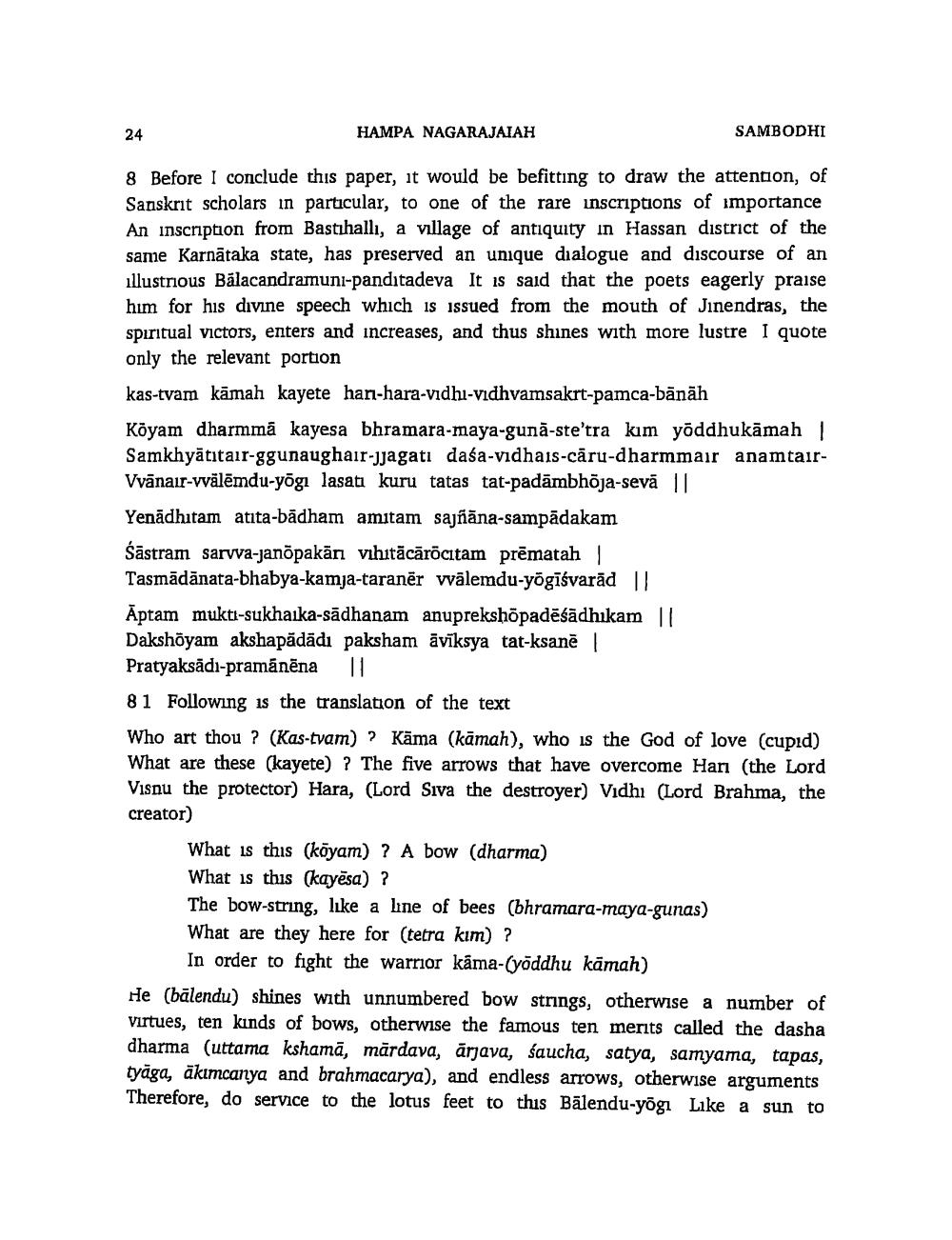________________
HAMPA NAGARAJAIAH
SAMBODHI
8 Before I conclude this paper, it would be befitting to draw the attention, of Sanskrit scholars in particular, to one of the rare inscriptions of importance An inscription from Bastıhallı, a village of antiquity in Hassan district of the same Karnātaka state, has preserved an unique dialogue and discourse of an illustrious Balacandramuni-panditadeva It is said that the poets eagerly praise him for his divine speech which is issued from the mouth of Jinendras, the spiritual victors, enters and increases, and thus shines with more lustre I quote only the relevant portion kas-tvam kāmah kayete han-hara-vidhi-vidhvamsakrt-pamca-bānāh Köyam dharmmā kayesa bhramara-maya-guna-ste'tra kim yoddhukāmah! Samkhyātitair-ggunaughair-jjagati daśa-vidhais-cāru-dharmmair anamtairVvānair-wālēmdu-yogi lasatı kuru tatas tat-padāmbhõja-sevā 11 Yenādhitam atita-bädham amitam sajñāna-sampādakam Šāstram sarva-janōpakān vihitācārocitam prēmatah Tasmādānata-bhabya-kamja-taranēr välemdu-yögīśvarād 11 Aptam mukti-sukhaika-sādhanam anuprekshópadēsādhikam || Dakshöyam akshapādādı paksham āvīksya tat-ksanë Pratyaksādı-pramánēna 11 81 Following is the translation of the text Who art thou ? (Kas-tvam) ? Kāma (kāmah), who is the God of love (cupid) What are these (kayete) ? The five arrows that have overcome Hari (the Lord Visnu the protector) Hara, (Lord Siva the destroyer) Vidhi (Lord Brahma, the creator)
What is this (köyam) ? A bow (dharma) What is this (kayēsa) ? The bow-string, like a line of bees (bhramara-maya-gunas) What are they here for (tetra kim) ?
In order to fight the warrior kâma-Cyöddhu kāmah) He (bālendu) shines with unnumbered bow strings, otherwise a number of virtues, ten kinds of bows, otherwise the famous ten merits called the dasha dharma (uttama kshamā, mārdava, ārjava, śaucha, satya, samyama, tapas, tyāga, akimcanya and brahmacarya), and endless arrows, otherwise arguments Therefore, do service to the lotus feet to this Bālendu-yogi Like a sun to




